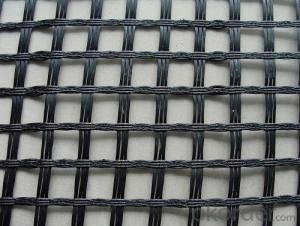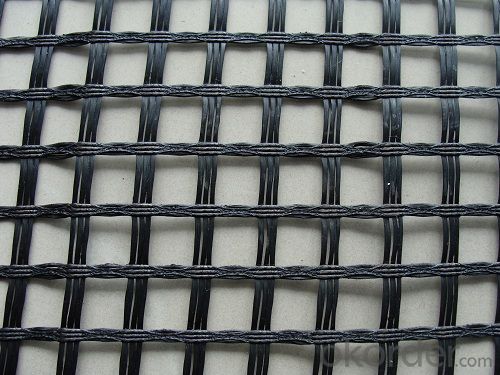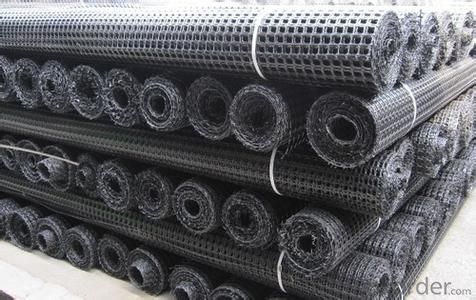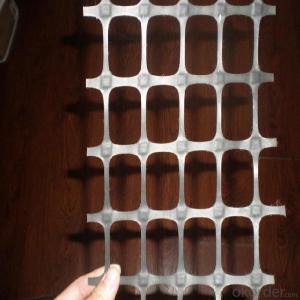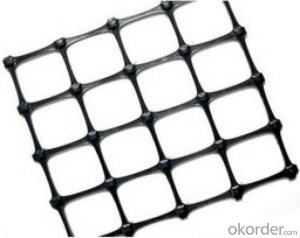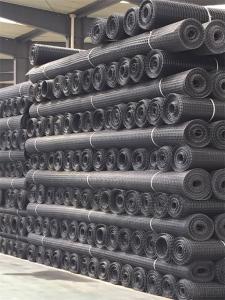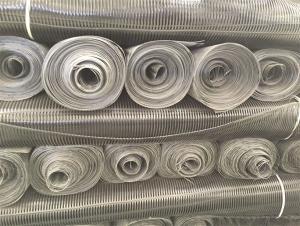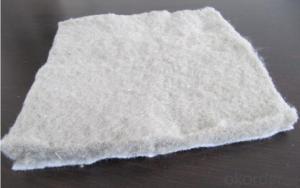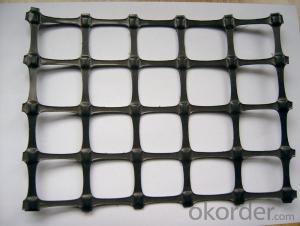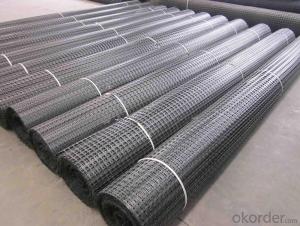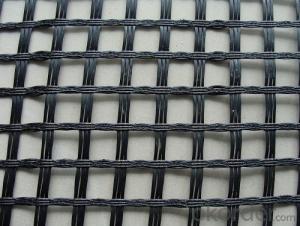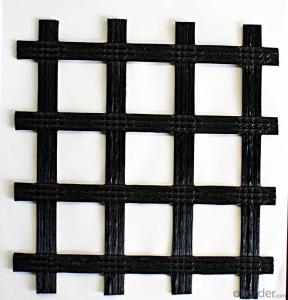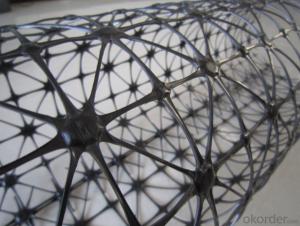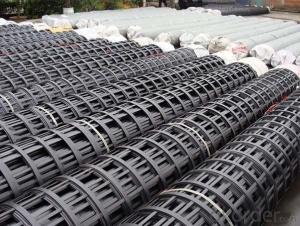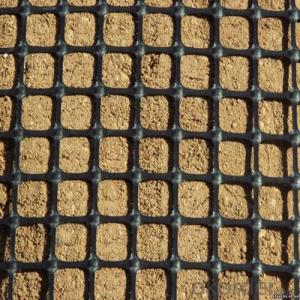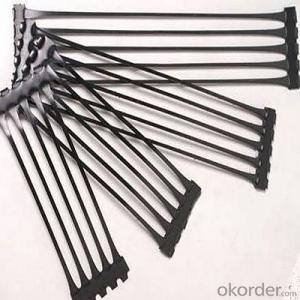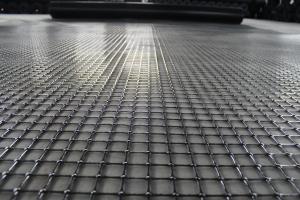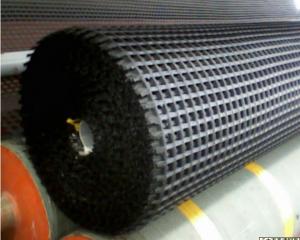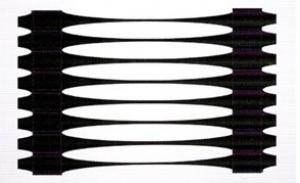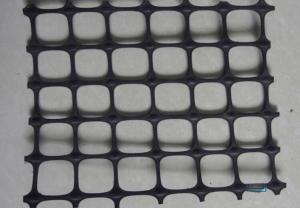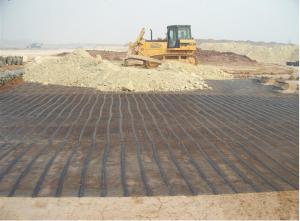Polypropylene Biaxial Geogrids for Noise Reduction - Different Sizes
- Loading Port:
- China Main Port
- Payment Terms:
- TT or LC
- Min Order Qty:
- -
- Supply Capability:
- -
OKorder Service Pledge
OKorder Financial Service
You Might Also Like
1. Product Description:
Double-direction geogrid is made of high molecular polymer through extrusion, forming and punching before longitudinal and lateral stretching. This material has considerable tensile strength in longitudinal and lateral directions. This chain structure can effectively bear and diffuse forces on soil and is applicable to large area permanent load bearing foundation as a reinforce. Biaxial geogrid is made of pp/pe,mainly applied in highway, railway, slope protecting project
2. Product Characteristic:
1. High tensile strength, good creep resistance, chemical nature is stable;
2. Anti-corrosive, anti-aging, anti-UV, acidproof, alkaliproof, saltproof,etc.
3. The construction is convenient, the cycle is short and the cost is low.
3.Specification :
Type: Geogrids
Model Number: TGDG
Material: Plastic-Steel,HDPE/PP
Color: black etc.
Length: 50-100m (or at request)
Tensile strength: 15~100KN/M
Color: black and etc.
Material: PP/PE
CE/: ISO9001
4. Reference Picture:
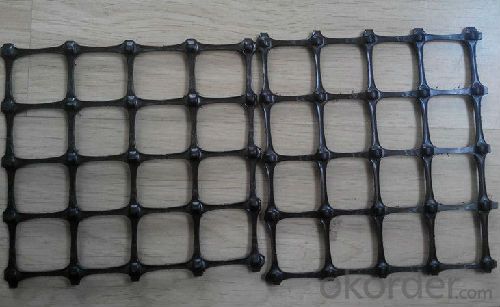
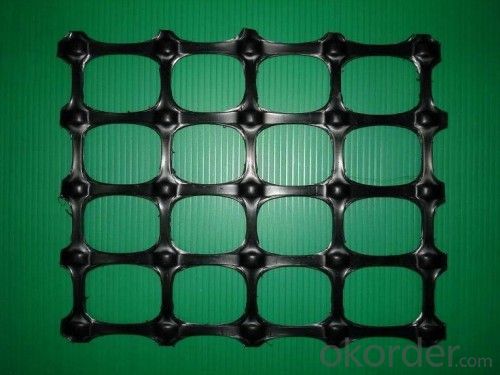
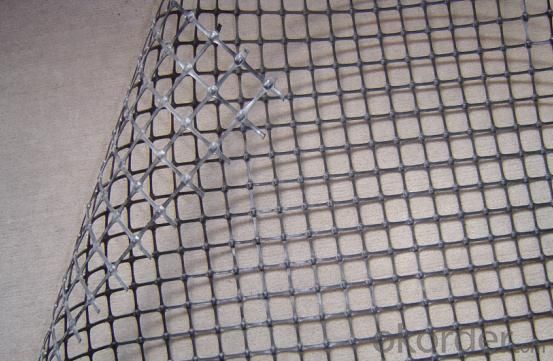
- Q: Do geogrids require maintenance?
- Yes, geogrids do require maintenance. Routine inspection is necessary to ensure their proper functioning and longevity. This may involve checking for any signs of damage, such as tears or punctures, and addressing any issues promptly. Additionally, regular cleaning and removal of debris is important to prevent clogging and maintain the effectiveness of geogrids. Overall, proper maintenance helps to extend the lifespan and performance of geogrids in various applications.
- Q: Geogrid width mean?
- Width is the width of Geogrid
- Q: How do geogrids improve the performance of geocell-reinforced embankments?
- Geogrids improve the performance of geocell-reinforced embankments by providing additional reinforcement and stability. They help distribute the load more evenly, reducing the stress on the geocells and preventing displacement or failure. Additionally, geogrids enhance the overall strength of the embankment, increasing its resistance to lateral movement and vertical settlement.
- Q: Can geogrids be used in stabilization of mine waste dumps?
- Yes, geogrids can be used in the stabilization of mine waste dumps. Geogrids are commonly used in the civil engineering field for soil stabilization, reinforcement, and erosion control. By incorporating geogrids into mine waste dumps, they can provide additional strength and stability to the structure, reducing the risk of slope failure and erosion. Additionally, geogrids can help distribute the load more evenly, preventing settlement and maintaining the integrity of the waste dump.
- Q: How do geogrids improve the load distribution in paved surfaces?
- Geogrids improve load distribution in paved surfaces by providing reinforcement and stability. They distribute the load across a wider area, reducing stress on the pavement and preventing cracking or rutting. Geogrids act as a structural support, enhancing the overall strength and longevity of the paved surface.
- Q: What are the design considerations for geogrid-reinforced embankments?
- Some key design considerations for geogrid-reinforced embankments include the selection of appropriate geogrid material and specifications, determining the required geogrid strength and spacing, considering soil-geogrid interaction and interface friction, considering potential differential settlement and stability issues, and ensuring proper construction and installation techniques are followed. Additionally, factors such as drainage, environmental conditions, and long-term performance should also be taken into account during the design process.
- Q: What are the factors that affect the durability of geogrids?
- There are several factors that can affect the durability of geogrids. These include the type and quality of the materials used in manufacturing the geogrid, the environmental conditions in which it is installed, the level of stress and strain it is subjected to, and the presence of any chemical or biological agents that can degrade the geogrid over time. Additionally, proper installation techniques and maintenance practices can also play a role in determining the durability of geogrids.
- Q: Geogrid tgsg50-50 what does it mean
- Hello ~TGSG is just a product code, referring to the two-way Plastic Geogrid
- Q: What is the effect of creep on geogrid performance?
- Creep can have a significant impact on the performance of geogrids. Over time, the constant stress and strain on the geogrid can cause it to slowly deform and lose its original shape and strength. This can result in reduced load-bearing capacity and overall effectiveness of the geogrid in reinforcing and stabilizing the soil. It is important to consider creep behavior when designing and selecting geogrids for long-term applications to ensure their durability and performance.
- Q: How long do geogrids typically last?
- Geogrids typically have a lifespan ranging from 20 to 75 years, depending on various factors such as the quality of the material, environmental conditions, and the level of stress they are subjected to.
Send your message to us
Polypropylene Biaxial Geogrids for Noise Reduction - Different Sizes
- Loading Port:
- China Main Port
- Payment Terms:
- TT or LC
- Min Order Qty:
- -
- Supply Capability:
- -
OKorder Service Pledge
OKorder Financial Service
Similar products
Hot products
Hot Searches
Related keywords
